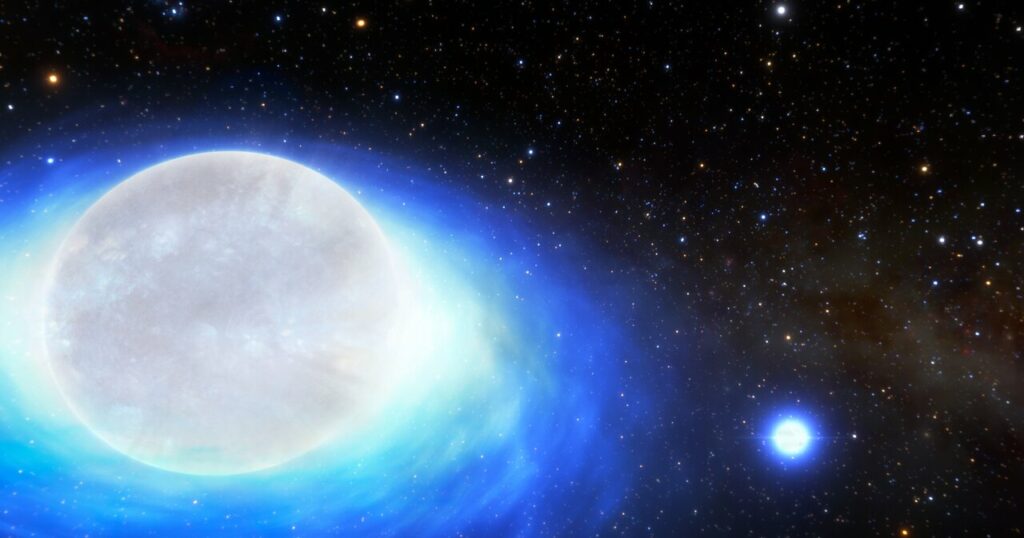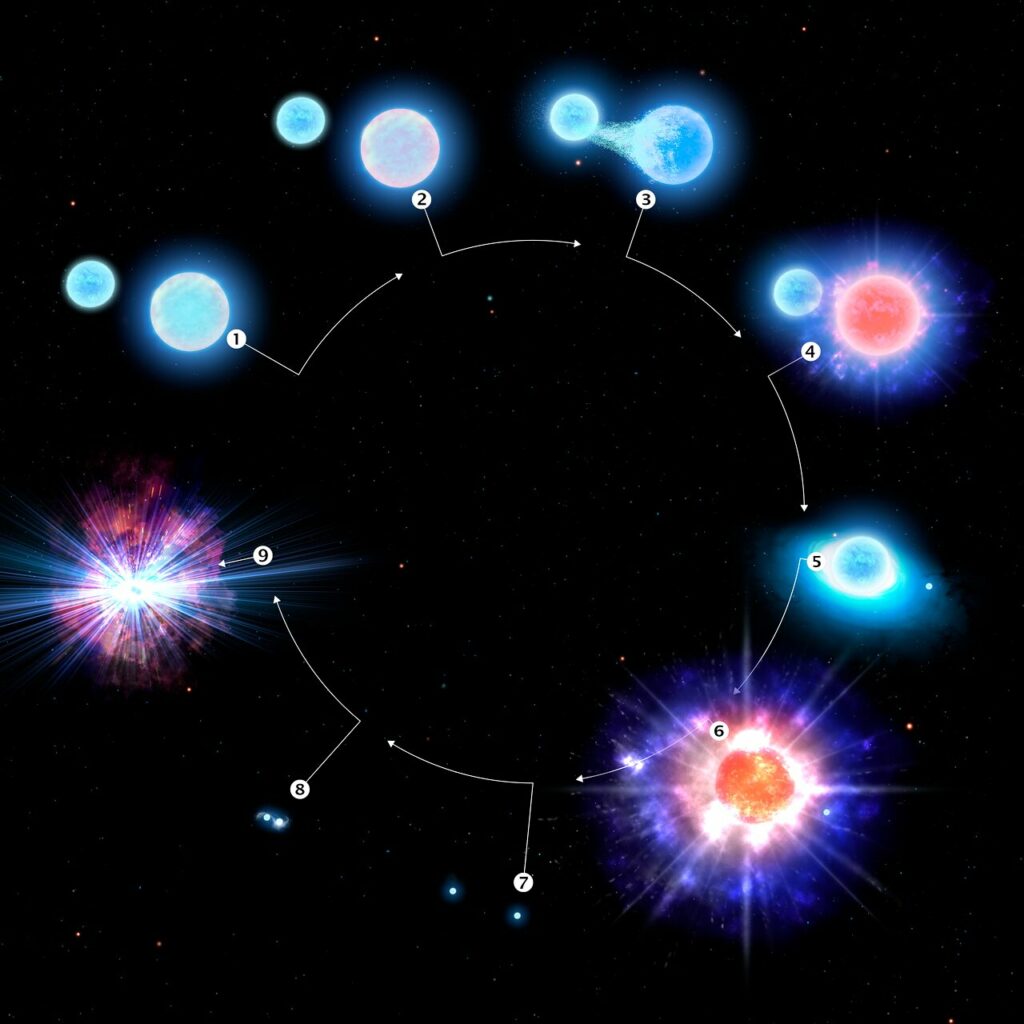During the observations, an international team of researchers discovered a very rare binary system. In the future, it will become a source of kilonova.

The system found by astronomers was designated CPD-29 2176. It is located at a distance of 11,400 light-years from Earth. The system was initially identified by the Swift Space Observatory. In the course of subsequent observations made using the 1.5-meter SMARTS telescope (it is part of the Cerro Tololo Inter-American Observatory), astronomers determined the orbital characteristics of its components.
CPD-29 2176 consists of a neutron star and a massive main sequence star in close orbit around it. According to astronomers, the star has already lost most of its outer shell, which has been absorbed by its companions. Consequently, when a luminary collapses at the end of its life cycle, it will be accompanied by a much smaller release of energy than a typical supernova flare.

This means that a neutron star formed as a result of the death of a star will be gravitationally bound to a neighboring neutron star. The distance between them will gradually decrease until they eventually merge. Astronomers classify such events as kilonova flares.
The future merger of two neutron stars will be accompanied by a powerful release of energy and the formation of strong gravitational waves. In addition, it will lead to the synthesis of a number of elements heavier than iron, which will eventually become part of the gas-dust clouds, which in turn will give rise to the next generation of stars and exoplanets.
It is worth noting that systems like CPD-29 2176 are extremely rare. According to astronomers, there are no more than a dozen such pairs in the entire Milky Way, which in the future will become a source of kilonova.
You can also read about how the merger of neutron stars gives birth to the densest object in the Universe.
According to https://noirlab.edu
Follow us on Twitter to get the most interesting space news in time
https://twitter.com/ust_magazine
